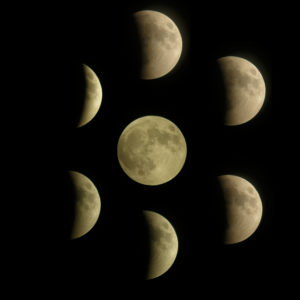The recent total solar eclipse rekindled my interest in astronomy, and in relatively simple ways to make photographs of astronomical events. I’ve dusted off my digiscoping rig (a 10-MP point-and-shoot grafted onto a 10mm eyepiece on my 60-mm spotting scope) and have started looking through my photo archives to try to remember the settings I used on some photos. And it turns out there was a lunar eclipse back in 2015 that I never even posted photos of!
So here are a few shots from that event. Some are from my brand-new-at-the-time telephoto lens on a DSLR; others are from my digiscoping setup. After two years, I’m favorably impressed with each system. The size of the images is better from my digiscoping rig; that setup is able to make the moon’s disk about twice as large. Despite that apparent handicap, I’m quite impressed with the sharpness and detail available with the DSLR telephoto.
If I recall correctly, I had the DSLR mounted piggyback on my 8-inch SCT, which makes a very steady imaging platform. The digiscope is on an alt-az mount that’s pretty shaky. That might account for the poorer resolution of the images, even though the moon itself is a larger subject in them. (There’s also the fact that the DSLR provides 24-MB images while the digiscoping rig only has a 10-MP camera.)
Timing of the eclipse:
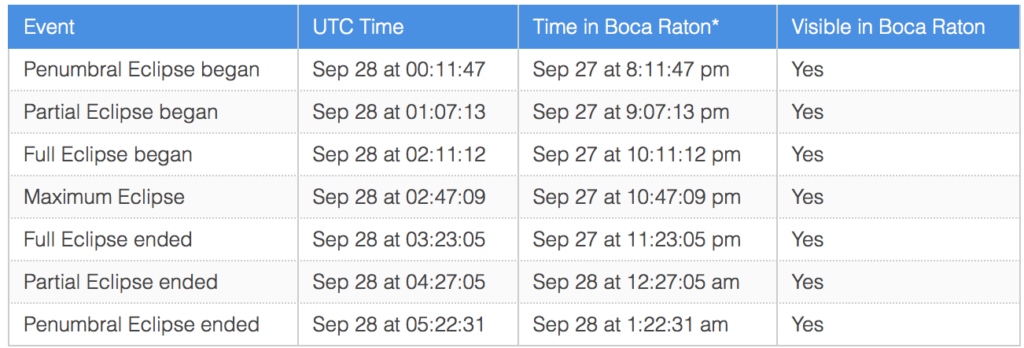
Here’s the first image of the event, taken with the digiscoping rig at, if the camera’s clock was correct, about 8:43 PM EDT:
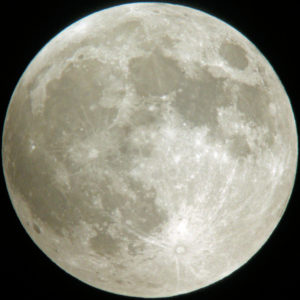
One of the things I like about the digiscoping rig is the color of the moon; it’s always a sort of soft yellow, instead of the bright white or monochrome shots one often sees.
And here’s the first image from the DSLR, taken nearly 10 minutes later:
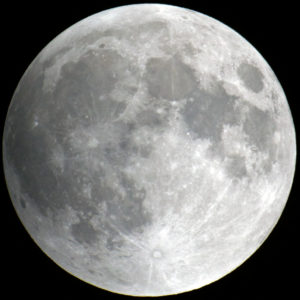
That’s not too bad for a test run of the lens! A few more images below.
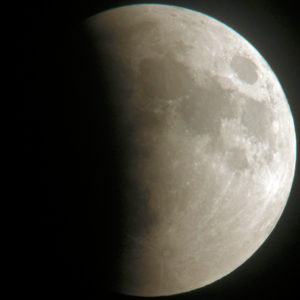
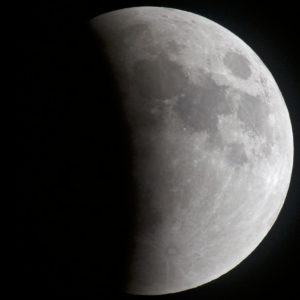
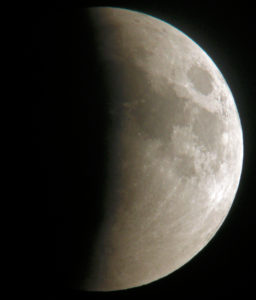
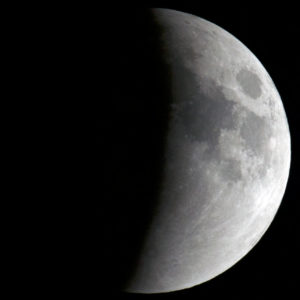
Here’s a photo from the DSLR, rotated and cropped but otherwise unprocessed, from just before totality:
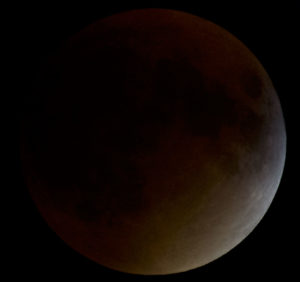
And here it is with a bit of processing (tone and highlights adjusted to try to capture some detail). I don’t recall whether this is closer to what we saw with the naked eye or through binoculars/telescope eyepiece or not:
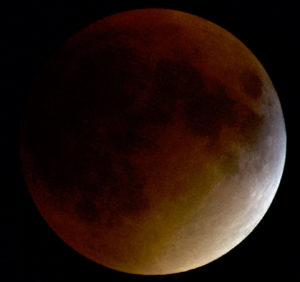
I had to use the DSLR photos at this point, because the point-and-shoot camera on the digiscoping rig was unable to deal with the darkened moon as the eclipse came closer and closer to totality.
And, last but not least, here are two composite images, one of digiscope and one of DSLR capture:
